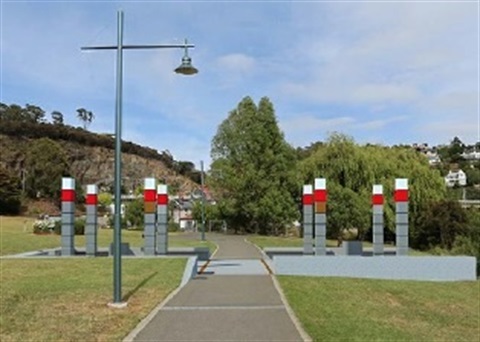Polish monument works to get underway
Published on 22 November 2017

In October, 1947, a group of 280 Polish ex-servicemen came to Tasmania and started work for the Hydro-Electric Commission.
They were the first Government sponsored non-British migrants and by the end of the following year, more than 800 Polish men were working across Tasmania.
In the years following, Polish migrants worked in construction camps at Tarraleah, Bronte Park, Butlers Gorge, Waddamana, Poatina, Trevallyn Dam, Wayatinah and Liawenee.
They worked 44 hours per week, living initially in provisional barracks with primitive facilities, and helped to build the state's hydro-electric infrastructure, including dams, canals and power stations.
After completing their work contracts, the majority of the post-war migrants moved to the larger cities of Hobart and Launceston.
They were joined by other Polish migrants who came to Tasmania to start new lives, and who took on work across the state in a wide variety of fields.
Today more than 3300 Tasmanians claim Polish ancestry.
Last year members of the Polish Pioneers Foundation requested permission from the City of Launceston to install a memorial in Kings Park to commemorate the contribution of the Polish community in Tasmania.
Kings Park already houses several commemorations to Launceston’s history of military or peacetime endeavours.
The Council voted to grant permission at its public Council meeting on November 28, 2016, and the Polish Pioneers Foundation subsequently lodged a Development Application.
No representations against the proposal were made.
The column-style monument, which features vertical LED flood lights will be entirely funded and constructed by the foundation.
It will be installed at Kings Park in coming weeks, resulting in some pedestrian detours, with work expected to be complete early next year.
Launceston Mayor Albert van Zetten said the monument would form another attraction in Kings Park, a recreational riverfront area which was growing in popularity.
"Kings Park is part of the network of recreational walkways that extends from the Cataract Gorge to the Seaport and soon the North Bank site," Mayor van Zetten said.
"There are already a number of feature areas in the park, including the 2/40th battalion memorial and the Peter Underwood Garden for Peace.
"This monument will add to that and helps to celebrate the post-war migrants who contributed, and still contribute, so much to Tasmania."
Honed Architecture + Design's Michael Bernacki, himself of Polish descent, said it had been exciting to work on the designs for the monument on behalf of the foundation.
"There's no doubt that the arrival of Polish migrants in Tasmania at the close of WWII came at an important time for Tasmania," Mr Bernacki said.
"Their stories are intertwined with that of Tasmania's hydro-electricity scheme, but of course Polish migrants played a much broader role in Tasmania.
"And it's not just the story of the men, but the wives and girlfriends and fiancées who came to Tasmania to start new lives.
"The Polish migrants were involved in industries right across the spectrum — they were miners and dentists, pilots and labourers, nurses, bricklayers, farm hands, lawyers, teachers and engineers.
"My father was one of these migrant Polish workers, so it has been a very interesting project for me to work on from a personal perspective.
"The monument will sit either side of the pathway and the eight columns in the design are symbolic of the eight locations the Polish migrants were first based when building various parts of Tasmania's hydro-electric scheme after the war.
"We hope that once built, the monument will be a place of reflection, somewhere to sit and enjoy the riverbank, and somewhere where the wider community can contemplate some of the different people, stories and cultures that have helped make our city and state what it is today."